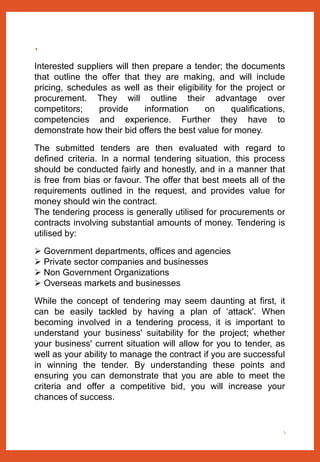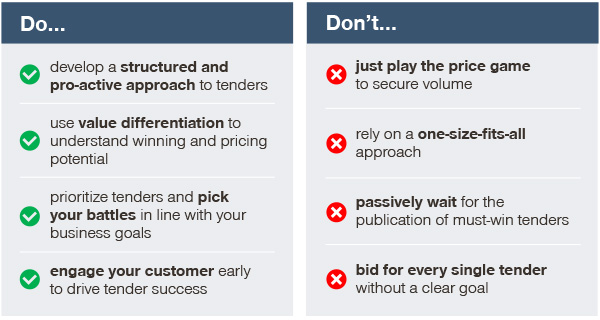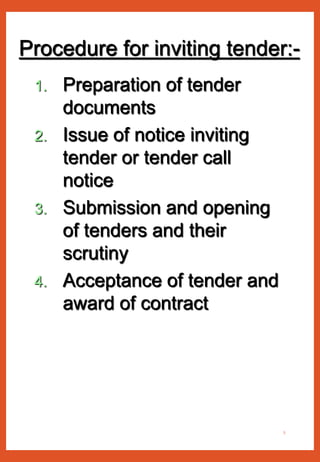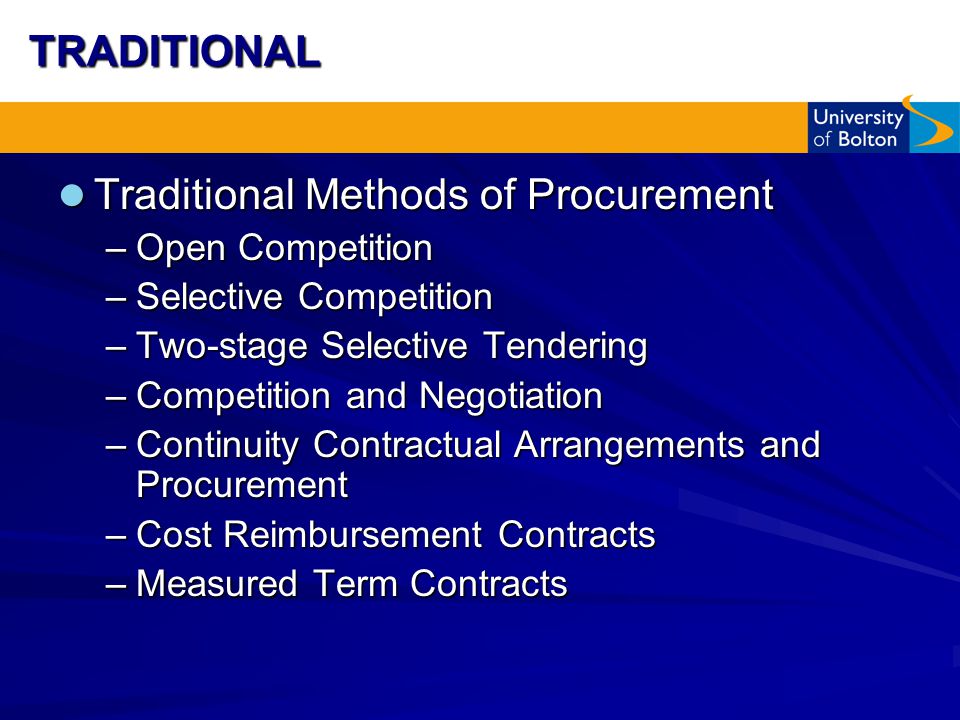Procurement refers to the process of acquiring goods, services, or works from external suppliers. Tendering is a common method used in procurement to invite bids from potential suppliers and select the most suitable one. There are several types of tendering, each with its own set of rules and procedures.
One type of tendering is open tendering, also known as public tendering. In open tendering, any qualified supplier can participate in the bidding process. This type of tendering is often used for large contracts and is intended to ensure a fair and competitive bidding process. Open tendering is also used to promote transparency and accountability in the procurement process.
Another type of tendering is restricted tendering, also known as selective tendering. In restricted tendering, only pre-selected suppliers are invited to participate in the bidding process. This type of tendering is typically used when there is a limited number of qualified suppliers or when the procurement requirements are highly specialized. Restricted tendering allows the procuring organization to narrow down the pool of potential suppliers, saving time and resources in the selection process.
A third type of tendering is negotiated tendering, also known as negotiated procurement. In negotiated tendering, the procuring organization works directly with a supplier to develop the terms and conditions of the contract. This type of tendering is often used when the procurement requirements are complex or when the procuring organization has a long-standing relationship with a supplier. Negotiated tendering can be a more flexible and efficient method of procurement, but it may also be perceived as less transparent and less competitive.
A fourth type of tendering is single-source tendering, also known as direct procurement. In single-source tendering, the procuring organization contracts directly with a single supplier without inviting bids from other potential suppliers. This type of tendering is typically used in emergency situations or when the procurement requirements are unique and cannot be met by multiple suppliers. Single-source tendering is generally considered less competitive and may be subject to additional scrutiny to ensure fairness and transparency.
In conclusion, there are several types of tendering in procurement, each with its own set of rules and procedures. The type of tendering used depends on the procurement requirements and the needs of the procuring organization. Open tendering is intended to ensure a fair and competitive bidding process, while restricted tendering allows the procuring organization to narrow down the pool of potential suppliers. Negotiated tendering allows for more flexibility and efficiency, but may be perceived as less transparent and less competitive. Single-source tendering is generally used in emergency situations or when procurement requirements are unique and cannot be met by multiple suppliers.







